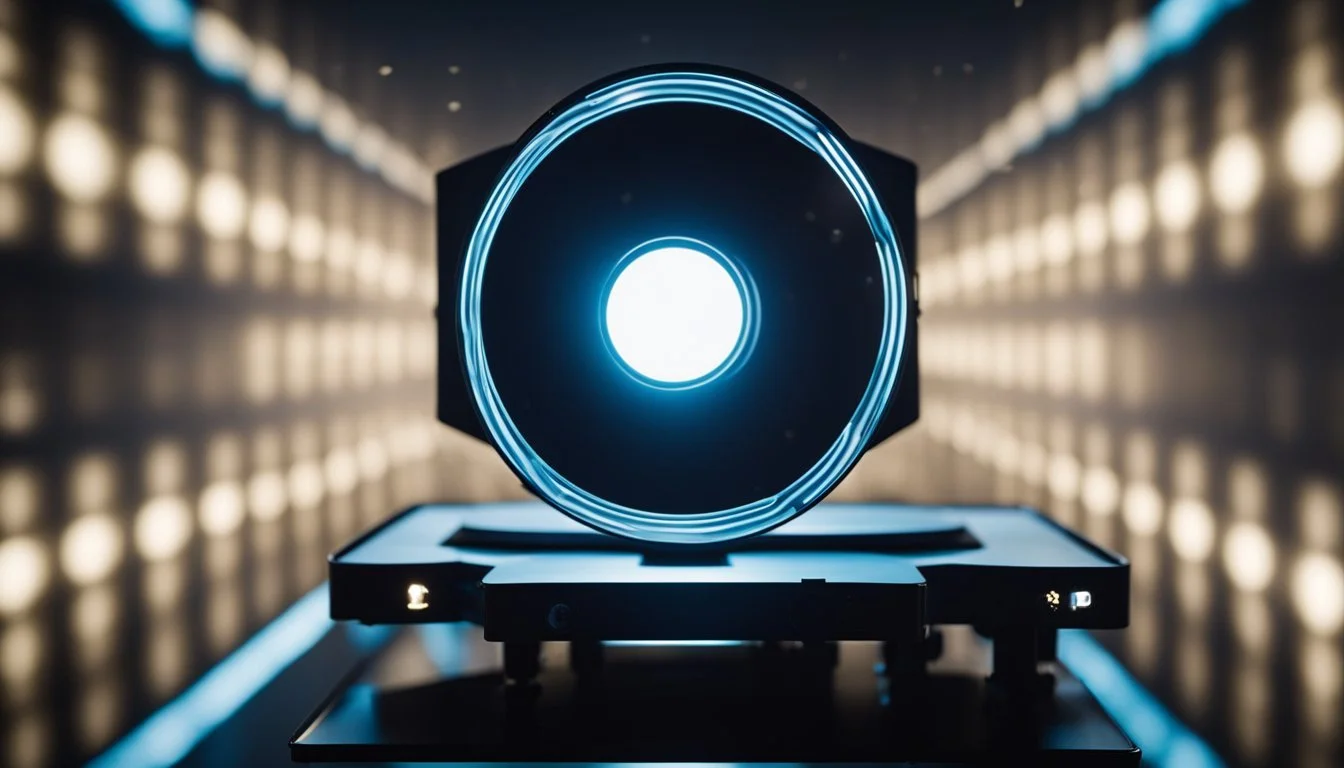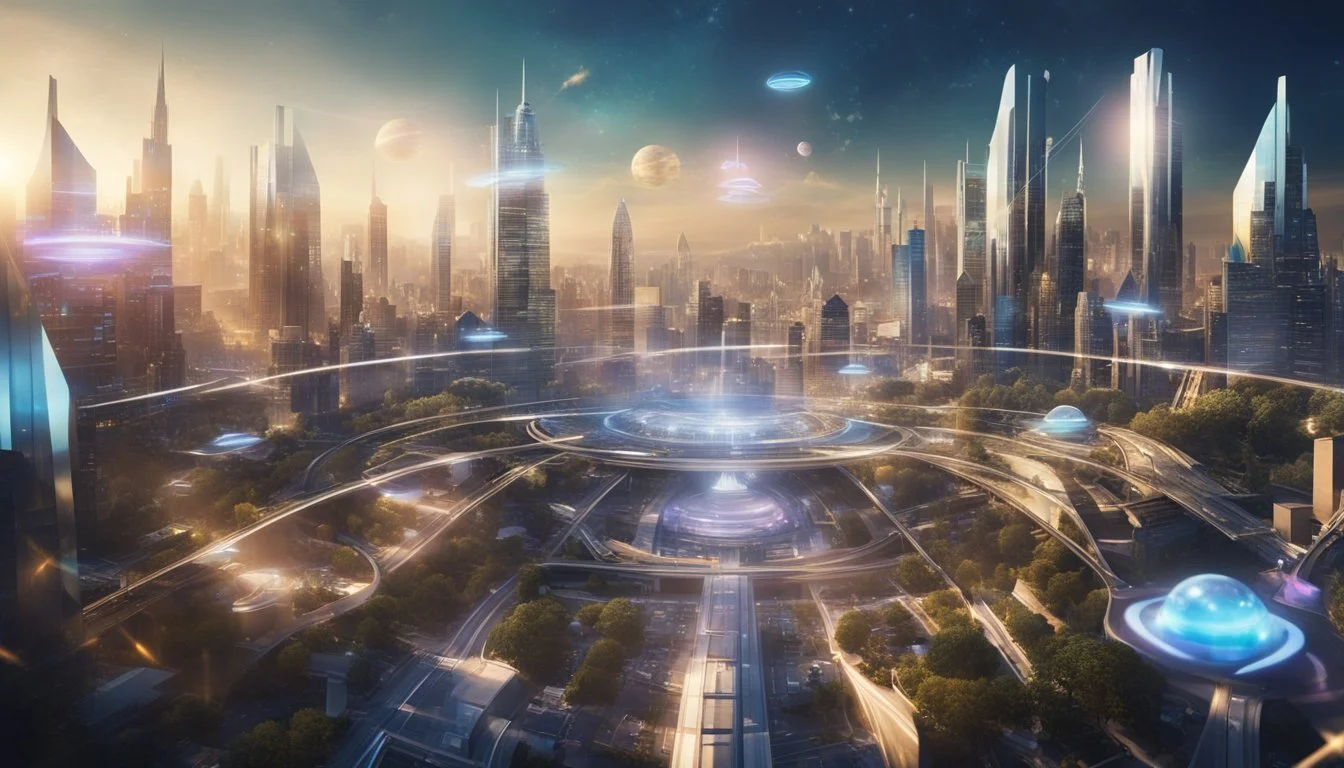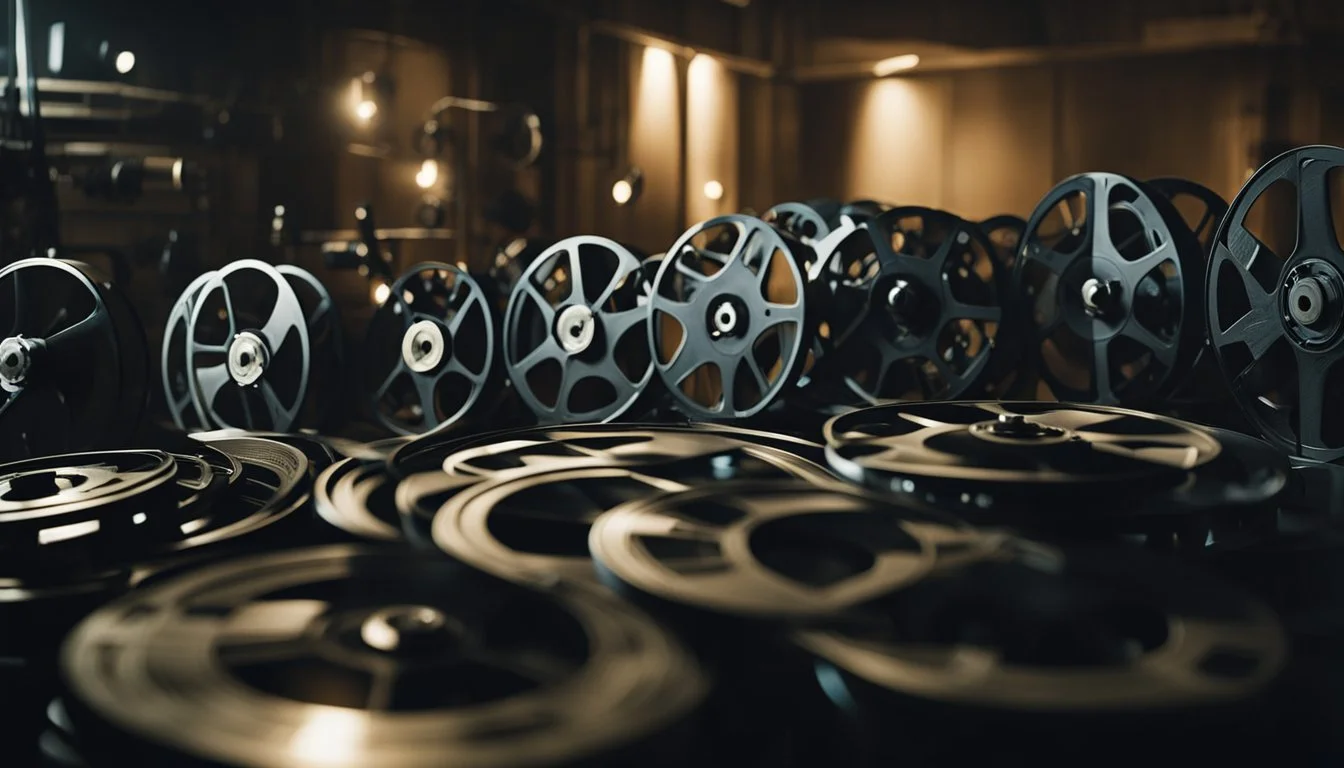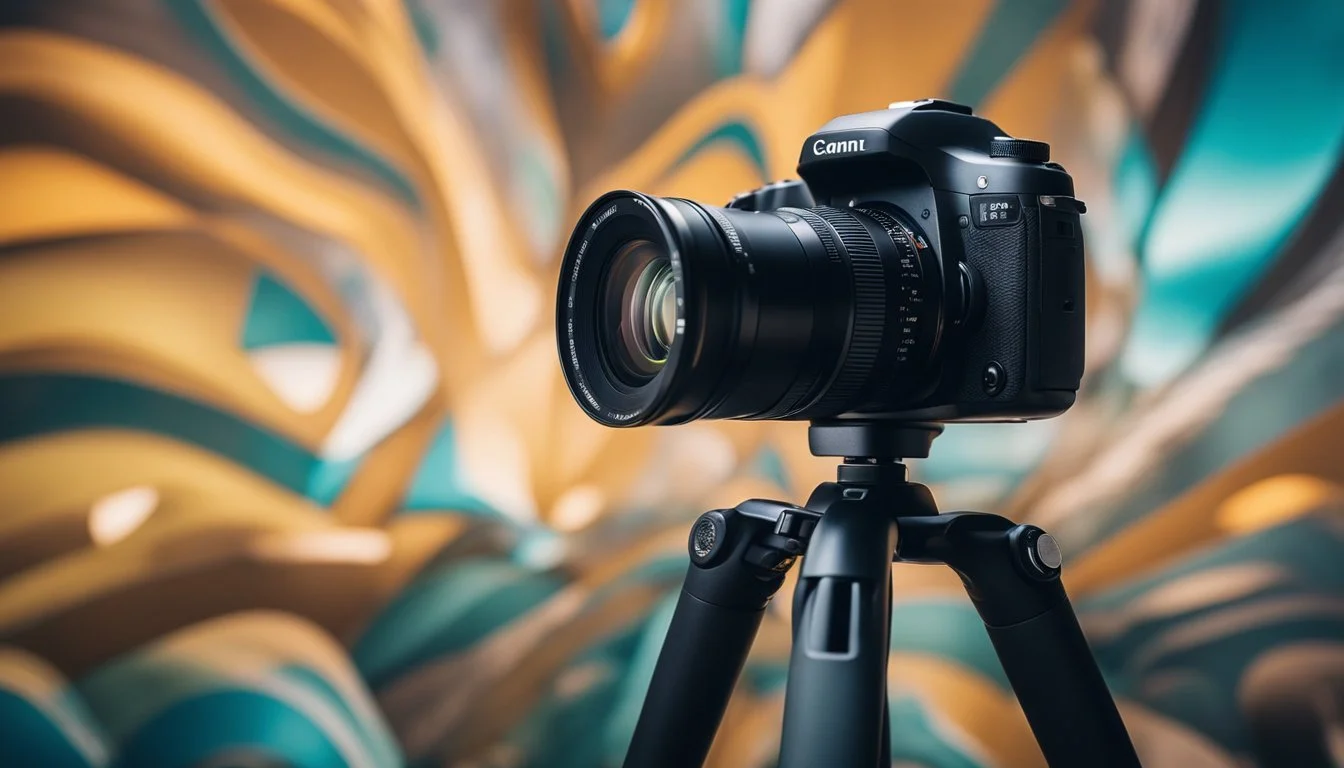Exploring the Boundaries of Experimental Filmmaking
Innovations and Techniques
Experimental filmmaking transcends conventional cinema by embracing innovative narrative techniques and visual styles. In a genre where creativity knows no bounds, filmmakers break free from traditional storytelling methods, using avant-garde techniques to craft unique and compelling films that challenge audiences to see the art of cinema from new perspectives.
These films are characterized by their unconventional narratives, daring visual experiments, and the innovative use of sound. Experimental filmmakers push the medium forward, often redefining the role of the camera and using it as a creative tool rather than a mere recording device. This approach not only challenges the norms of mainstream film but also ignites artistic innovation.
From the underground movements of the 1950s and 1960s to contemporary avant-garde projects, experimental films play a crucial role in the evolution of cinematic expression. By exploring unfamiliar territories, these films continue to inspire both filmmakers and audiences to expand their horizons and rethink the possibilities of storytelling in film.
Historical Evolution of Experimental Cinema
Experimental cinema emerged as a significant art form by challenging conventional filmmaking techniques and embracing new, often radical methods. Key factors influencing its progress include the early pioneers, cross-pollination with modern art movements, and technological innovations.
Pioneers and Avant-Garde Roots
In the 1920s, artists like Man Ray, Fernand Léger, and Marcel Duchamp infused cinema with avant-garde principles. Influenced by Dada and Surrealism, they rejected traditional narratives, focusing instead on visual experimentation. Their films often featured abstract imagery, non-linear storytelling, and innovative editing techniques.
Germany also contributed with the work of filmmakers such as Walter Ruttmann and Hans Richter. These pioneers laid the foundation for a genre that continues to challenge visual and narrative norms.
Influence of Modern Art Movements
Modern art movements, including Dada, Surrealism, and Futurism, played a crucial role. Dadaists embraced randomness and absurdity, influencing filmmakers to explore non-cohesive storylines and abstract visuals. Surrealists like Luis Buñuel and Salvador Dalí brought dream-like sequences and subconscious themes to their films.
Futurism's focus on dynamic movement and technology further inspired experimental techniques. These artistic influences enabled filmmakers to push boundaries, creating works that were both controversial and groundbreaking.
Technological Advancements and Their Impacts
Technological advancements significantly impacted experimental cinema. The introduction of handheld cameras allowed greater mobility and a more intimate perspective. Innovations in film editing techniques enabled more complex and abstract visual narratives.
The digital revolution of the late 20th century introduced new possibilities for manipulation and special effects. Software tools have made it easier to experiment with colors, shapes, and motion, further expanding the horizons of experimental filmmaking.
These technological shifts have also democratized the genre, making it accessible to a broader range of creators.
Defining Experimental Film
Experimental films break away from traditional storytelling and visual techniques. They employ unconventional methods to challenge and expand the boundaries of cinema.
Characteristics and Techniques
Experimental films use innovative approaches to narrative and aesthetics. These films often lack a clear plot and may feature fragmented or nonlinear stories. Techniques such as rapid editing, non-diegetic sound, and abstract visuals are common.
Filmmakers also explore unique camera angles, special effects, and color manipulation. They often focus on evoking emotions and thoughts rather than delivering a straightforward story.
Experimental vs. Mainstream Cinema
Mainstream films prioritize narrative clarity, high production values, and mass appeal. Experimental films, on the other hand, prioritize artistic expression and innovation. These films are typically produced outside the commercial studio system.
While mainstream films follow genre conventions and strive for broad audience engagement, experimental films target niche audiences. The financial risks are higher, but the creative freedom is unparalleled.
Genres and Styles within Experimental Filmmaking
Experimental filmmaking encompasses a wide variety of styles and genres. These include avant-garde, abstract, surrealist, and underground films. Avant-garde films often challenge existing perceptions and social norms using bold visuals.
Abstract films focus on shapes, colors, and patterns without conventional narratives. Surrealist films explore the subconscious, often using dream-like imagery and illogical sequences. Underground films are characterized by their low budgets and subversive content, often addressing taboo subjects.
Each style brings its unique approach to storytelling, challenging viewers to rethink their understanding of cinema.
Narrative Structure in Experimental Films
Experimental films often break away from traditional narrative structures. They employ nonlinear storytelling and may even omit a clear narrative altogether, creating a unique and innovative viewing experience.
Nonlinear Storytelling
Nonlinear storytelling in experimental films disrupts the conventional chronological sequence of events. Filmmakers may rearrange events, use flashbacks or flash-forwards, and integrate multiple timelines. This approach allows for emotional resonance and thematic exploration that linear narratives might not achieve.
The audience is often invited to piece together the story independently. This active engagement can lead to a deeper connection with the film’s themes and characters. Examples include films like "Pulp Fiction" and "Memento," which manipulate time and perspective to create complex narratives.
Absence of Narrative
Some experimental films entirely forgo traditional narrative elements. Instead of focusing on plot and character development, these films emphasize visuals, soundscapes, and abstract concepts. This absence of narrative allows for greater artistic freedom and can evoke emotional and intellectual responses from the audience.
In these works, meaning is derived from the sensory experience rather than a structured storyline. Films by directors like Stan Brakhage often prioritize visual poetry over narrative clarity, inviting viewers to interpret the content in their own way.
Visual Language and Aesthetics
The realm of experimental filmmaking breaks away from traditional norms to explore unique visual languages and aesthetics. This section delves into the critical components such as the use of color and light, abstraction, and the role of symbolism and metaphor.
Use of Color and Light
Experimental filmmakers often treat color and light as principal components of their visual storytelling.
Filmmakers like Stan Brakhage used vibrant, contrasting colors to evoke emotional responses from the audience. In some experimental films, light is manipulated to create dynamic shadows and patterns, enhancing the visual complexity of the scene.
The interplay of color and light not only sets the mood but also guides the viewer’s emotional journey through the piece. Instead of using color and light to mimic reality, these elements are often exaggerated or purposely altered to invoke an avant-garde aesthetic.
Embracing Abstraction
Abstract elements form the core of many experimental films, diverging sharply from narrative-driven works.
Artists like Maya Deren and Kenneth Anger have used surreal and non-linear visuals to engage audiences in a more interpretative viewing experience. These abstract forms can range from distorted imagery to geometric shapes floating across the screen.
Abstract filmmaking often challenges viewers to derive personal interpretations from the visual content presented, encouraging an active engagement with the film.
Symbolism and Metaphor
Symbolism and metaphor are frequently embedded in experimental films to convey deeper meanings without explicit narrative explanations.
Symbols such as recurring shapes, objects, or specific color motifs can represent complex themes and emotions. For instance, the repeated use of broken mirrors in a film might symbolize fragmented identity or reality.
Metaphorical elements allow filmmakers to communicate abstract ideas, making the audience reflect on broader societal or philosophical issues. The use of these techniques can transform simple visual components into profound statements, enriching the cinematic experience.
Sound and Music in Experimental Cinema
In experimental cinema, sound and music are pivotal in creating unique audiovisual experiences. They challenge traditional narrative structures and visual primacy, offering new ways to engage audiences.
Role of Soundscapes
Soundscapes in experimental cinema serve as a crucial element that shapes the viewer’s perception. They can establish mood, atmosphere, and emotional tone without relying on conventional narrative cues. For instance, abstract sounds or natural sound recordings can evoke a sense of place or time. The diversity of soundscapes ranges from minimalistic ambient sounds to complex layers of noises and tones. By integrating soundscapes creatively, filmmakers can blur the line between the auditory and visual, enhancing the immersive quality of the film.
Dissonance and Harmony
Dissonance and harmony play significant roles in the audio experience of experimental films. Dissonant sounds can create tension and unease, disrupting the viewer's comfort and drawing attention to the auditory layer of the film. These sounds can be jarring or unsettling, contributing to a fragmented or chaotic narrative structure. Conversely, harmonious sounds often provide a sense of balance and resolution. These elements work together or in contrast to manipulate emotional responses and keep the audience engaged. Experimentation with these sonic elements allows filmmakers to explore new emotional territories.
Diegetic vs. Non-Diegetic Sounds
Understanding the use of diegetic and non-diegetic sounds is essential in experimental cinema. Diegetic sounds originate from within the film's world, such as dialogue, footsteps, or ambient sounds. These sounds help anchor the audience in the film's reality. Non-diegetic sounds, including background scores or voiceovers, do not originate from the on-screen environment and can offer commentary or additional layers of meaning. Experimental filmmakers often play with these boundaries, using non-diegetic sounds to break the fourth wall or create a more cerebral viewing experience. The blend or stark contrast of these sounds adds depth to the narrative and enriches the auditory palette of the film.
Audience and Reception
Experimental films often attract niche audiences with unique interests and viewpoints. The reception of such films varies widely, influenced by their innovative approaches and the channels through which they are exhibited and distributed.
Cult Following and Subcultures
Experimental films frequently develop a cult following. These films resonate with subcultures, including avant-garde artists, hipsters, and queer communities. Such audiences are drawn to the bold, non-traditional narratives and artistic expression.
They appreciate films that challenge mainstream cinematic norms. Underground film movements of the 1950s and 1960s are examples, often showcasing stories overlooked by Hollywood. These communities support and create platforms for experimental cinema, fostering a sense of belonging and mutual appreciation.
Criticism and Interpretation
Reception of experimental films involves diverse critiques and interpretations. Scholars and critics often debate the films' meanings, given their unconventional structures and abstract content.
The viewing experience can be subjective, requiring audiences to actively engage with what they see and hear. This engagement leads to varied analyses and emotional responses. Critics play a crucial role in interpreting these films for broader audiences, often influencing their commercial success and cultural impact.
Exhibition and Distribution Challenges
Experimental films face significant challenges in exhibition and distribution. Major theaters and streaming platforms may bypass such films, deeming them less commercially viable. This limits audience reach and exposure.
Filmmakers rely on film festivals, independent theaters, and online platforms to showcase their work. These alternative venues are crucial for connecting with target audiences. The limited distribution channels require innovative marketing strategies to garner attention and increase viewership.
Impact on Future Filmmakers
Experimental filmmaking has left an indelible mark on modern cinema by challenging and redefining established norms. It has facilitated new methods of storytelling and technical innovation that future filmmakers continue to explore and integrate into mainstream films.
Inspirational Legacy
Experimental films have often served as a wellspring of inspiration for budding filmmakers. By breaking traditional narrative structures, these films encourage creative thinking and originality. Filmmakers such as Stan Brakhage and Maya Deren are notable for their innovative techniques, which challenge viewers’ perceptions and inspire directors to explore unconventional storytelling methods.
In particular, the works of the French New Wave and avant-garde movements have demonstrated the viability of non-linear narratives and unique visual styles. These movements have spurred filmmakers to experiment with form and content, leading to the creation of genre-defying cinema that pushes creative boundaries.
Crossovers into Popular Cinema
Experimental techniques have significantly influenced mainstream movie-making. Directors like Christopher Nolan and David Lynch, known for their narrative complexity and visual innovation, have drawn upon experimental methods to create compelling stories that resonate with wider audiences.
For example, the use of long takes and handheld camerawork in Alfonso Cuarón's "Children of Men" exhibits how experimental techniques can enhance storytelling by creating immersive cinematic experiences. Additionally, the transition from analog to digital filmmaking, as seen in works like James Benning’s "Ruhr", represents technological advancements initially pioneered in experimental circles but now commonplace in popular cinema.
Such crossovers illustrate the indispensability of experimental filmmaking in driving the evolution of film as a creative and technical medium.
Contemporary and Future Trends
The landscape of experimental filmmaking is rapidly evolving with digital innovation, immersive virtual reality experiences, and interactive participation. These trends are shaping the future of how films are made, viewed, and experienced.
Digital Filmmaking Innovation
Digital technology has transformed experimental filmmaking. Filmmakers now have access to advanced tools that allow for intricate visual effects and unique storytelling methods. The affordability and accessibility of high-quality digital cameras and editing software empower a broader range of artists to explore unconventional styles.
Innovations such as CGI (Computer-Generated Imagery) and digital compositing enable the creation of visually complex scenes that were previously impossible. These tools allow filmmakers to blend reality and fantasy seamlessly, resulting in groundbreaking visual narratives.
The rise of short-form content on digital platforms has also opened new avenues for experimental filmmakers. They can reach global audiences through online festivals and streaming services, democratizing the distribution of their work.
Virtual Reality and Immersive Experiences
Virtual Reality (VR) is revolutionizing how audiences engage with films. VR technology provides a 360-degree environment where viewers can interact with the narrative, significantly altering the traditional viewing experience.
Filmmakers are leveraging VR to create immersive storytelling that places viewers inside the story, offering a first-person perspective. This technology enables a deeper emotional connection and a sense of presence that conventional films cannot match.
Projects like VR documentaries and virtual art installations are pushing the creative boundaries, offering new ways to explore themes and subjects. As VR technology advances, opportunities for more sophisticated and interactive experiences will continue to grow.
Participatory and Interactive Projects
Participatory filmmaking involves the audience directly in the creation or progression of the film. This trend is gaining popularity as it blurs the lines between filmmaker and viewer, making the audience a part of the storytelling process.
Interactive projects often use digital platforms where viewers can influence the narrative through choices. These projects utilize branching storylines and multiple endings, providing a personalized viewing experience.
Live-action role-playing (LARP) and crowd-sourced films are other examples of participatory projects. These innovative approaches engage audiences on a new level, making the film experience more collaborative and dynamic.
Case Studies and Notable Works
The world of experimental filmmaking offers a plethora of groundbreaking films and visionary directors. This section will explore specific landmark films that have defined the genre and analyze the key directors who have made significant contributions.
Landmark Experimental Films
"Un Chien Andalou" (1929): Directed by Luis Buñuel and Salvador Dalí, this surrealist film is iconic for its dream-like sequence and shocking imagery. It remains influential in both film theory and practice.
"Meshes of the Afternoon" (1943): Maya Deren's short film is characterized by its non-linear narrative and symbolic visuals, becoming a cornerstone of American avant-garde cinema.
"Wavelength" (1967): Michael Snow's continuous 45-minute zoom shot in a single room has been hailed as a masterpiece of structural film. It challenges conventional perspectives and demands viewers' intense focus.
"Scorpio Rising" (1963): Kenneth Anger’s film combines pop culture, homoerotic imagery, and a rock ’n’ roll soundtrack, making it a pioneering work in subversive cinema.
Analysis of Key Directors and Filmmakers
Stan Brakhage: Known for his abstract visuals and silent films, Brakhage’s works like "Dog Star Man" and "Mothlight" utilize unconventional techniques such as painting directly onto celluloid and collage.
Maya Deren: A pioneering female filmmaker, Deren's exploration of dream states and psychological landscapes in films like "At Land" and "Ritual in Transfigured Time" has left a lasting impact on experimental cinema.
Kenneth Anger: His controversial and influential works, including "Fireworks" and "Invocation of My Demon Brother", blend occult imagery with pop culture, reflecting his unique vision and style.
Chris Marker: Known for "La Jetée", a film composed almost entirely of still photographs, his work is celebrated for its narrative innovation and philosophical depth.
Experimental filmmaking continues to evolve, pushing the boundaries of the medium and inspiring new generations of filmmakers. By examining these landmark films and visionary directors, one can gain a deeper appreciation for this ever-changing and challenging genre.
Conclusion
Experimental filmmaking continues to push the boundaries of cinema. It challenges traditional narratives and opens new pathways for artistic exploration.
Audiences are presented with unique and unconventional visual and auditory experiences, which can provoke deep reflection and emotional responses.
As a creative medium, experimental films play an essential role in the broader spectrum of cinematic art, nurturing creativity and innovation.
Through the use of innovative techniques and bold storytelling, these films defy mainstream conventions, providing a platform for voices and perspectives often overlooked in commercial cinema.
Experimental filmmaking doesn't simply entertain; it invites viewers to engage with abstract ideas and complex themes.
In this way, it serves as a vital and influential part of the film industry, encouraging ongoing evolution and experimentation in cinematic expression.








